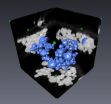(Press-News.org) CAMBRIDGE, MA -- Increased natural gas production is seen as a crucial step away from the greenhouse gas emissions of coal plants and toward U.S. energy independence. But natural gas wells have problems: Large volumes of deep water, often heavily laden with salts and minerals, flow out along with the gas. That so-called "produced water" must be disposed of, or cleaned.
Now, a process developed by engineers at MIT could solve the problem and produce clean water at relatively low cost. After further development, the process could also lead to inexpensive, efficient desalination plants for communities in the developing world, the researchers say.
The new technology is described in a series of papers recently published in three journals: the International Journal of Heat and Mass Transfer, Applied Energy and the American Institute of Chemical Engineers' AIChE Journal. The research is the work of a team including MIT postdoc Prakash Narayan, mechanical engineering professor John H. Lienhard V, and collaborators at King Fahd University of Petroleum and Minerals (KFUPM) in Saudi Arabia.
The method is a variation of the standard distillation process, in which salty water is vaporized and then condenses on a cold surface; the salt separates out during evaporation. But this process is energy-intensive — and therefore costly — because all the water must be heated to the boiling point, while the condensing surfaces must be kept cold.
In the new process, water well below the boiling point is vaporized by direct contact with a carrier gas; the moist air is subsequently bubbled through cooler water where the purified vapor condenses. But the temperature difference between the warm and cool water is much less than in conventional dehumidifiers, and the surface area provided by the small bubbles is much greater than that of a flat condenser surface, leading to a more efficient process.
Less energy needed
The traditional version of this process is called a humidification dehumidification (HDH) desalination system. While other groups have designed HDH systems, this new version requires far less energy than previous systems, the team says.
Lienhard says, "We became interested in the HDH process at the start of our collaboration with KFUPM as a means of providing water to off-grid regions of the developing world. Both the MIT and the KFUPM faculty wanted to develop a technology that might benefit people all over the world."
At the beginning of his doctoral thesis research, Narayan was focused, he says, on ways "to increase energy efficiency and thermal efficiency, and to reduce size and cost" for desalination plants. Such facilities are a critical need in parts of the developing world — such as in southern India — that have limited fresh water but abundant seawater.
Conventional distillation plants have efficiencies of scale — the bigger they are, the more cost-effective — but for the HDH system, the optimum size is a plant that produces about 1,200 to 2,400 liters of clean water a day, about the capacity needed for a rural village. Such plants can easily be made larger simply by adding more modules, he says.
Lienhard notes that the HDH technology had not previously been the target of systematic analysis: "Over a period of years, our group developed new thermodynamic methods for assessment of these cycles, followed by a deep understanding of the causes of energy inefficiency in them. Eventually, this led us to the new configurations and components that are described in these latest publications."
Cleaning up gas-well water
The researchers have already filed for patents on the system, and the team has set up a company to commercialize the process in collaboration with another MIT group that has been pursuing a related system for desalination. While Narayan says the team's ultimate goal is desalination in developing countries, it turns out that the system is especially well suited for treating the produced water that comes from natural gas wells.
The water and other fluids used to open wells through hydraulic fracturing — also known as fracking — are a somewhat different matter, requiring other kinds of treatment and disposal. But a much bigger issue for the operators of these wells is the ongoing treatment of produced water, which represents a significant expense. This water is typically several times saltier than seawater, which makes it a particularly good candidate for treatment with the HDH process, Narayan says: Unlike membrane-based desalination systems, this system's efficiency is unaffected by saltier water. In fact, he adds, "The biggest advantage is when you deal with high salinity."
A leading journal on desalination technology, Water Intelligence Report, gave the system the highest rating awarded to any system for dealing with produced water.
The MIT team built a 12-foot-high test unit that has run continuously for weeks, producing about 700 liters of clean water a day. They have tested it using barrels of water from natural gas wells to demonstrate that it produces water clean enough to drink.
Their next step is to scale up to a plant about two to three times the size of this initial unit, which calculations show should be an optimal size. Narayan says he expects the first commercial plants could be in operation within about two years.
###
The authors of these recent papers also included recent MIT graduates Steven Lam and Maximus St. John; MIT graduate students Karim Chehayeb, Ronan McGovern and Gregory Thiel; and professors Mostafa H. Sharqawy and Syed M. Zubair of KFUPM and Sarit K. Das of the Indian Institute of Technology.
The work was supported by KFUPM through the Center for Clean Water and Clean Energy at MIT and KFUPM.
Written by David Chandler, MIT News Office
Purification on the cheap
2013-02-06
ELSE PRESS RELEASES FROM THIS DATE:
Are deaf and hard-of-hearing physicians getting the support they need?
2013-02-06
(SACRAMENTO, Calif.) — Deaf and hard of hearing (DHoH) people must overcome significant professional barriers, particularly in health care professions. A number of accommodations are available for hearing-impaired physicians, such as electronic stethoscopes and closed-captioning technologies, but are these approaches making a difference?
A team of researchers from the University of California, Davis, the University of Texas Health Science Center at San Antonio and the University of Michigan surveyed DHoH physicians and medical students to determine whether these and ...
New waterjets could propel LCS to greater speeds
2013-02-06
ARLINGTON, Va. —The Navy's fifth Littoral Combat Ship (LCS), Milwaukee, will be the first to benefit from new high-power density waterjets aimed at staving off rudder and propeller damage experienced on high-speed ships.
The product of an Office of Naval Research (ONR) Future Naval Capabilities (FNC) program, the waterjets arrived last month at the Marinette Marine shipyard in Wisconsin, where Milwaukee (LCS 5) is under construction.
"We believe these waterjets are the future," said Dr. Ki-Han Kim, program manager in ONR's Ship Systems and Engineering Research Division. ...
Study finds potential to match tumors with known cancer drugs
2013-02-06
ANN ARBOR, Mich. — When it comes to gene sequencing and personalized medicine for cancer, spotting an aberrant kinase is a home run. The proteins are relatively easy to target with drugs and plenty of kinase inhibitors already exist.
Now in a new study, University of Michigan Comprehensive Cancer Center researchers assess the complete landscape of a cancer's "kinome" expression and determine which kinases are acting up in a particular tumor. They go on to show that those particular kinases can be targeted with drugs – potentially combining multiple drugs to target multiple ...
New modeling approach transforms imaging technologies
2013-02-06
WEST LAFAYETTE, Ind. – Researchers are improving the performance of technologies ranging from medical CT scanners to digital cameras using a system of models to extract specific information from huge collections of data and then reconstructing images like a jigsaw puzzle.
The new approach is called model-based iterative reconstruction, or MBIR.
"It's more-or-less how humans solve problems by trial and error, assessing probability and discarding extraneous information," said Charles Bouman, Purdue University's Michael and Katherine Birck Professor of Electrical and Computer ...
Obesity treatment breakthrough described in EurekAlert!'s No. 1 most-visited news release in 2012
2013-02-06
EurekAlert!'s most-viewed news release from 2012 focused on a breakthrough in the treatment of obesity and related diseases using a combination of hormones, tested in mice, that resulted in weight loss and lowered blood sugar without negative side effects.
The theme of obesity was prominent in three other most-viewed news releases on EurekAlert! during 2012.. Other topics were mental health, neuroscience, marine conservation, human behavioral science, and progress toward a male contraceptive pill.
EurekAlert! is the global science news service operated by the American ...
Scientists debate CDC recommendations during meningitis outbreak
2013-02-06
A pair of commentaries to appear in an upcoming issue of the journal Antimicrobial Agents and Chemotherapy highlight a debate within the public health community surrounding Centers for Disease Control and Prevention (CDC) recommendations for treatment of exposed individuals during last year's fungal meningitis outbreak. Manuscripts of the commentaries were published ahead of print today on the journal's webpage.
"I will try to offer sufficient documentation to show there are alternative approaches worthy of consideration," writes David A Stevens of Stanford University ...
Does probability come from quantum physics?
2013-02-06
Ever since Austrian scientist Erwin Schrodinger put his unfortunate cat in a box, his fellow physicists have been using something called quantum theory to explain and understand the nature of waves and particles.
But a new paper by physics professor Andreas Albrecht and graduate student Dan Phillips at the University of California, Davis, makes the case that these quantum fluctuations actually are responsible for the probability of all actions, with far-reaching implications for theories of the universe.
Quantum theory is a branch of theoretical physics that strives ...
Plants cut the mustard for basic discoveries in metabolism
2013-02-06
LA JOLLA, CA----You might think you have nothing in common with mustard except hotdogs. Yet based on research in a plant from the mustard family, Salk scientists have discovered a possible explanation for how organisms, including humans, directly regulate chemical reactions that quickly adjust the growth of organs. These findings overturn conventional views of how different body parts coordinate their growth, shedding light on the development of more productive plants and new therapies for metabolic diseases.
Metabolism refers to all the chemical reactions in the body ...
A major step forward in explaining the ribbon in space discovered by NASA's IBEX mission
2013-02-06
The vast edges of our solar system – the boundary at the edge of our heliosphere where material streaming out from the sun interacts with the galactic material – is essentially invisible. It emits no light and no conventional telescope can see it. However, particles from inside the solar system bounce off this boundary and neutral atoms from that collision stream inward. Those particles can be observed by instruments on NASA's Interstellar Boundary Explorer (IBEX). Since those atoms act as fingerprints for the boundary from which they came, IBEX can map that boundary in ...
UTHealth research shows American Indians at greater risk of suicide after alcohol intoxication
2013-02-06
HOUSTON – (February 5, 2013) – American Indians are at much greater risk of suicide after acute alcohol intoxication, according to a study led by researchers at The University of Texas Health Science Center at Houston (UTHealth).
The study examined the prevalence and social demographic correlates of suicide involving acute alcohol intoxication among United States ethnic minorities. Results will be published in the May 2013 issue of Alcoholism: Clinical & Experimental Research and are currently available at Early View.
"Some reviews suggest that people with alcohol ...


